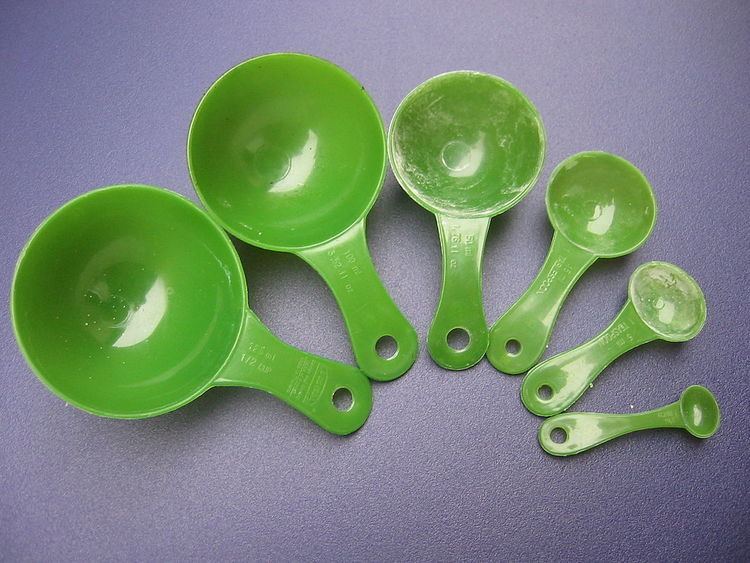 | ||
A measuring spoon is a spoon used to measure an amount of an ingredient, either liquid or dry, when cooking. Measuring spoons may be made of plastic, metal, and other materials. They are available in many sizes, including the teaspoon and tablespoon.
Contents
International
Metric measuring spoons are available in sets, usually between four and six, typically with decilitre (100 ml), tablespoon (15 ml), teaspoon (5 ml) and millilitre measures. For fractional measures, there is often a line inside to indicate "half" or "a quarter", or a separate measure may be included, like 1⁄2 dl.
United States
In the U.S., measuring spoons often come in sets, usually between four and six. This usually includes ¼, ½, and 1 teaspoon and 1 tablespoon. The volume of a traditional US teaspoon is 4.9 ml and that of a tablespoon is 14.8 ml, meanwhile standardized size nowadays are 5 and 15 ml, that is almost 1.5% difference.
Japan
In Japan, usually two spoons are used: a large spoon (大さじ, Ōsaji) and a small spoon (小さじ, Kosaji or Shōsaji). A large spoon is 15 milliliter, and a small spoon is 5 milliliter. Sometimes a much smaller spoon may be used, usually a 2.5 milliliter spoon. (½ small spoon)
Measuring with cutlery spoons
Cutlery in many countries includes (besides the fork and knife or butterknife) two spoons, which are referred to as a teaspoon and tablespoon — but not to be confused with measuring spoons. As cutlery, these spoons are not standardized and frequently hold somewhat less than their measuring spoon counterparts, that is 2-6 ml for teaspoons and 7-20 ml for tablespoons. The difference in size can be dangerous when used for critical measuring, like medication.
